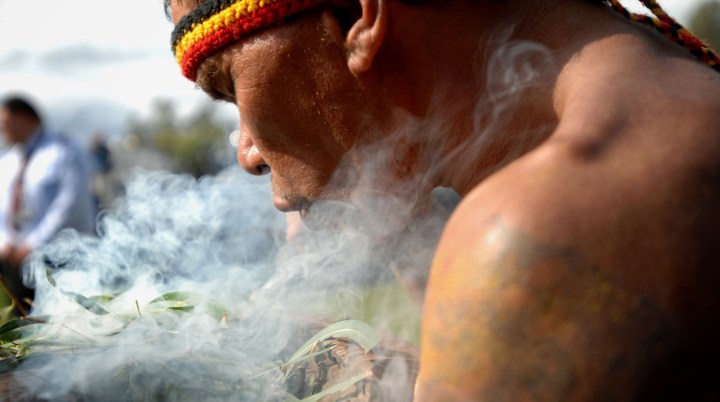BUSINESS MAVERICK
Gold Fields’ environmental, social and governance drive includes an Aboriginal charm offensive

Like most major mining companies these days, Gold Fields is on a mission to improve its record on ESG — environmental, social and corporate governance issues. This includes an Indigenous Peoples Strategy and a Reconciliation Action Plan.
Gold Fields CEO Nick Holland gave a webinar presentation on Monday showcasing the company’s ESG records and targets. There are others in the pipeline: Anglo American will provide its own at the end of the month.
Of interest in the presentation is the company’s focus on its relationships with Aboriginal communities in Australia, where it produces much of its gold. In February 2020 the company launched a Reconciliation Action Plan, based on a model developed by an NGO that has been adopted by more than 1,000 organisations across a range of sectors in Australia.
“ … in this first stage, we are focused on building capacity in our people and providing them with greater understanding and cultural awareness to inform our actions as we progress on our reconciliation journey. Our other key focus at this stage is in building and strengthening relationships with our Aboriginal and Torres Strait Islander stakeholders, recognising that this will take time,” the company said.
“Gold Fields is also developing appropriate strategies to improve and increase Aboriginal and Torres Strait Islander employment outcomes within our workplaces and increase supplier diversity, to achieve a greater representation of Aboriginal and Torres Strait Islander businesses in our supply chain,” it said. It says it is striving to provide economic and work opportunities for historically marginalised communities.
Some critics may dismiss ESG and such initiatives as corporate window-dressing or greenwashing and the like. But much of the thrust on this front, whether it is the reduction of carbon emissions, improved health and safety performance or building community relations, is being driven by investors.
This is why companies are spending more time on such matters and allocating capital towards them.
In the case of Australia, mining companies are especially wary about taking action that may offend Aboriginal communities.
Earlier in 2020, global mining giant Rio Tinto destroyed two 46,000-year-old Aboriginal rock shelter sites in Western Australia to gain access to some high-grade ore. No laws were broken, but the decision was stunningly ill-conceived. Rio shareholders – including Australia’s largest pension fund – reacted with revulsion at the detonation of the archaeologically significant shelters at Juukan Gorge in Western Australia, which was pointedly opposed by Aboriginal groups. This is why Rio Tinto CEO Jean-Sébastien Jacques is on his way out the door.
“An important learning from the recent destruction of ancient caves located at Juukan Gorge in WA is that ongoing and transparent stakeholder engagement must be closely allied to legal approval and heritage management processes. Furthermore, we support the management and preservation of Aboriginal cultural heritage at each of our operations, including through the conduct of heritage surveys and cultural awareness training,” Gold Fields said.
So the preservation of “heritage” and “cultural awareness” are being added to the ESG canon.
ESG compliance has also led to some quirky projects. Gold Fields, for example, is in the process of protecting and relocating 25 endangered chinchillas to make way for an $860-million mine project in Chile, making them perhaps the most valuable rodents in history.
Government inertia can be an obstacle to the achievement of ESG goals. Last week, President Cyril Ramaphosa pledged to add almost 12,000MW to the South African electricity grid in the next two years and the fast-tracking of applications for self-generation of energy supply.
Yet Gold Fields has been waiting for three years for approval for a 40MW solar project at its South Deep mine west of Johannesburg. The plant would not only reduce the company’s reliance on unreliable Eskom, but also help it to reduce its carbon footprint. In August 2020 Holland said he was hopeful of approval within a month or two. Two months later, he said he was now hoping to get the green light for the project before the end of the year.
Will South African power regulators see the light? BM


















 Become an Insider
Become an Insider
Comments - Please login in order to comment.